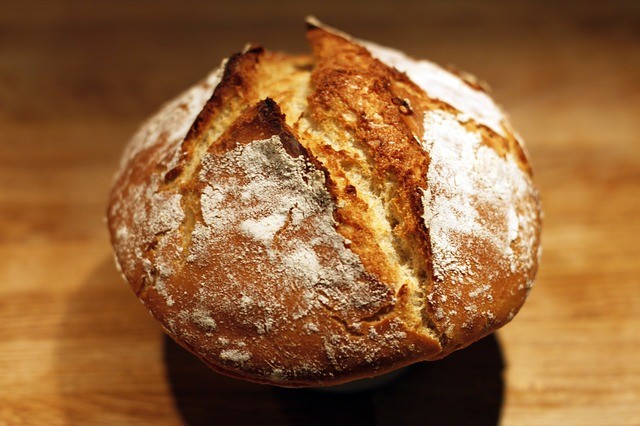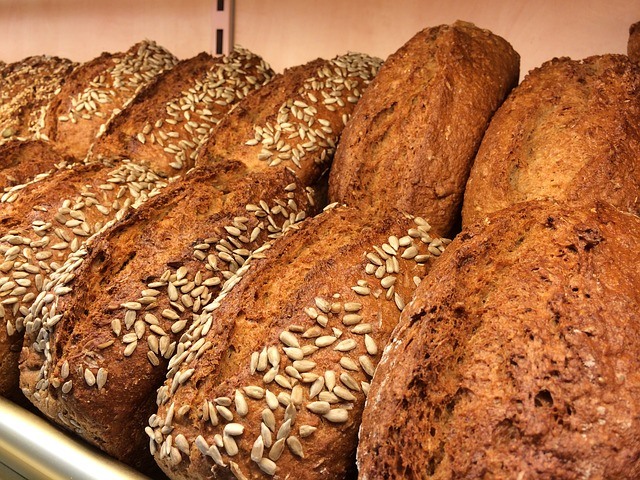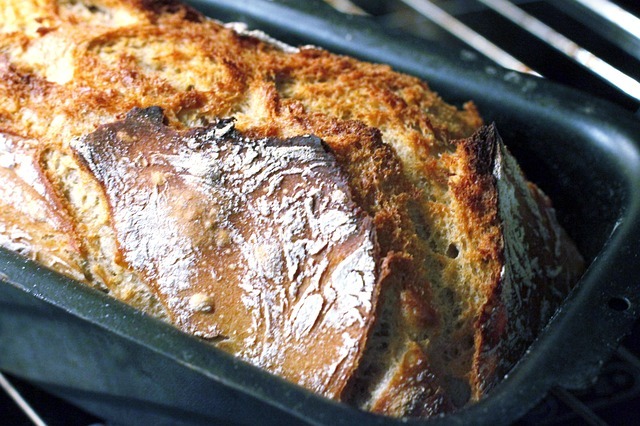Many people find sourdough to be a delicious but daunting variety of bread that seems almost unobtainable.
This article is meant to dispel that idea, as well as teach you how to work with a lesser known superfood grain: Spelt.

Contents
What is Spelt?
A close relative to wheat, spelt is an older variety that is considered to be much more nutritious than wheat.
In one cup of cooked spelt, you’ll find more than your entire daily intake of manganese, 29% of your daily intake of phosphorous, a quarter of your daily intake of niacin, and almost 20% of your daily intake of iron.
Furthermore, spelt is high in fiber and carbohydrates and has trace amounts of calcium, selenium, and vitamins B1, B6, and E. All in all, it’s incredibly healthy for you!
How to Make Spelt Sourdough Bread
Ingredients
Now that you want to make your own bread, you will need to prepare a few ingredients in advance.
- 4 cups of spelt flour.
- 1 ½ cup of water.
- 1 tablespoon of sourdough starter.
- 1 ½ cups of all-purpose flour.
- 2 tablespoons of melted, unsalted butter.
- 2 tablespoons of honey.
- 1 ¼ teaspoons of salt.
- ½ teaspoon of instant yeast.
Once you have all these together, it will be time to begin prepping your dough.
Keep in mind this dough will need at least two days to make. However, that time will be well worth it, as the end result is incredible.

Directions
- Before starting anything, you need to make what is called a levain. This will act as the lightening agent and fermented part of the bread, giving it the necessary air to form bubbles, while also granting the texture you want. To make it, start by measuring out one cup of the spelt flour and mixing it with the water and sourdough starter. Allow it to ferment while covered, at room temperature, for twelve hours or overnight. After this, it should be bubbly and larger in volume.
- The next day, slowly begin adding the remaining flour and other ingredients, mixing until everything is fully incorporated.
- Once this is done, it is time to mix and knead together the dough. The ideal texture is soft, smooth, and elastic. Make sure you only add enough flour to prevent the dough from sticking, as it will quickly reach that texture and shouldn’t be overly floured.
- Once everything is set, you should allow the dough to rise. It will need to be covered and placed somewhere that’s at room temperature. At this stage, it will not double in size, but will become puffier than before. This is good, as it will result in a lighter, more airy dough.
- While the dough is rising, grease a covered bread pan, being sure to get every side and every corner. If the bread sticks, it’ll tear, resulting in a loss of moisture and a more crumbly bread.
- Form the dough into a log and place it in the pan, covering and allowing to rise for between 1 and 1 ½ hours
- About 30 minutes before baking, preheat your oven to 425 degrees Fahrenheit.
- Uncover the loaf and make a slash down the center before covering again. You may choose to dust the top of the loaf with flour prior to slashing it, in order to create a more artisan appearance, as well as making the slash easier. This is perfectly fine, but be sure that whatever you slash the dough with is razor sharp. Some choose to use a box cutter or even a shaving razor.
- Begin baking the bread for 10 minutes, before reducing the temperature to 400 and baking for another 25-30 minutes. Then, uncover and bake it for another five minutes – or until the loaf is gold and crisp. If a digital thermometer is inserted, it will read 190 degrees Fahrenheit.
- Finally, remove the bread from the oven and allow it to cool completely before slicing. This should take around one hour.
- Should you have extra after a meal, it can be stored at room temperature for several days if wrapped properly – or even longer if frozen. Should you freeze it, to reheat, just bake at 400 degrees for ten minutes or until thawed.

Conclusion
Now you have your own means of creating a healthier version of sourdough bread, and hopefully you will be less worried about making your own loaves in the future.
Keep in mind that when creating a starter, you are working with fermented materials, so caution is always important.
However, the end result is delicious bread that can be shared with the whole family. So have fun, enjoy, and experiment!
You may want to adorn the top with things like fennel or poppy seeds to give it extra flair – it’s entirely up to you!
Have you tried making spelt sourdough bread?
